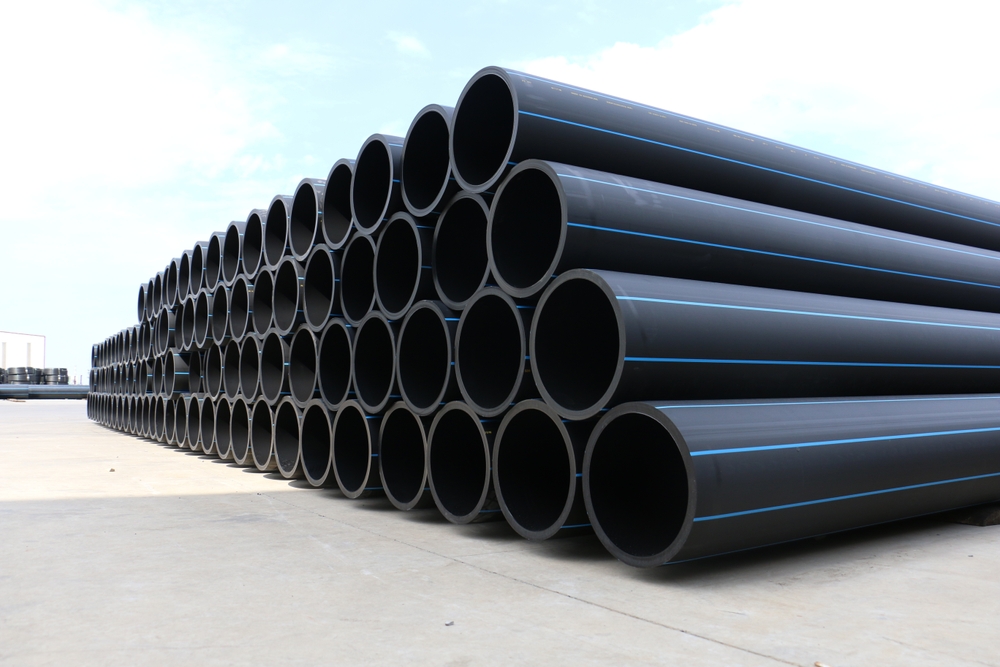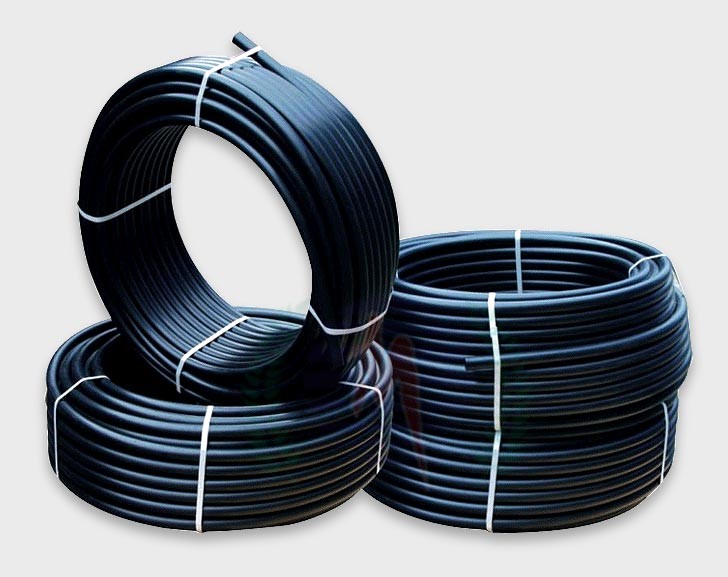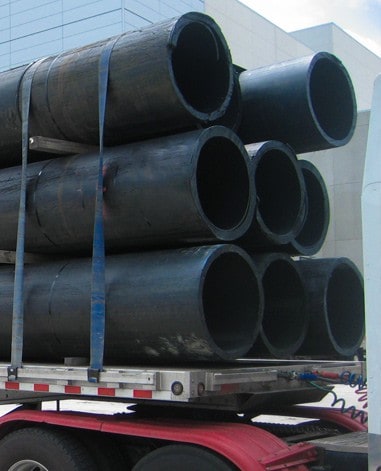Essential Reasons to Choose hdpe pipe suppliers Midland TX for Industrial Applications
Wiki Article
Discover the Manufacturing Refine Behind High-Quality HDPE Pipeline and Its Applications
The manufacturing process of top notch HDPE pipelines is detailed and methodical. It begins with the selection of basic materials that enhance efficiency. Following this, ethylene undergoes polymerization to create material, which is after that formed with extrusion. Quality control is extremely important, ensuring that the end product fulfills strict standards. The trip of HDPE pipelines doesn't finish with manufacturing. Their applications throughout numerous industries reveal a more comprehensive relevance worth taking a look at.Understanding HDPE: Properties and Advantages

High-density polyethylene (HDPE) is a functional thermoplastic known for its longevity and resistance to various ecological aspects. This material shows exceptional tensile toughness, making it appropriate for requiring applications. Its low-density structure adds to a lightweight item, helping with simplicity of taking care of and installment. HDPE likewise showcases remarkable resistance to chemicals, which minimizes destruction when exposed to rough materials.
The material's low dampness absorption even more boosts its longevity, making it ideal for usage in pipelines and tank. Additionally, HDPE is resistant to ultraviolet (UV) radiation, ensuring that items preserve their honesty even when revealed to sunlight. Its adaptability enables for the production of elaborate forms without endangering toughness. The environment-friendly nature of HDPE, typically originated from recycled products, contributes to its appeal, promoting lasting methods in production. On the whole, these buildings and benefits make HDPE a recommended selection for numerous industrial and consumer applications.
Raw Material Selection for HDPE Production
The choice of resources for HDPE production is vital to validate the end product fulfills the wanted specifications and top quality criteria. High-density polyethylene (HDPE) is mostly generated from polymerized ethylene, originated from fossil gas such as gas or crude oil. The quality of these feedstocks significantly influences the mechanical and thermal residential properties of the last HDPE.Ingredients additionally play a substantial duty in boosting HDPE's efficiency, consisting of anti-oxidants, UV stabilizers, and colorants, which improve toughness and resistance to environmental elements. The selection process should consider not just the chemical make-up of the raw materials but additionally their handling attributes to guarantee reliable production.
Additionally, the sourcing of basic materials need to focus on sustainability and conformity with environmental regulations, as liable methods are important in today's market. Ultimately, mindful raw product choice lays the structure for generating high-quality HDPE pipelines suitable for diverse applications.
The Extrusion Refine: Shaping HDPE Pipe
The extrusion process plays a crucial function fit HDPE pipelines, beginning with careful product preparation methods that guarantee suitable flow and uniformity. Equally important is the design of the die, which straight affects the final dimensions and surface area quality of the pipe. Together, these elements add significantly to the performance and quality of HDPE pipe production.Product Preparation Methods
Reliable production of HDPE pipes begins with careful product preparation methods, specifically the extrusion process. During this phase, high-density polyethylene material is initial dried to get rid of wetness, making sure perfect circulation features. The material is after that fed right into the extruder, where it undergoes heating and melting, transforming into a thick state. This home heating process is thoroughly managed to preserve the material's integrity and performance. The molten HDPE is required via a die, shaping it right into a constant pipeline form. Appropriate temperature level management during extrusion is crucial, as it directly affects the material's residential or commercial properties and the end product high quality. As soon as formed, the HDPE pipeline is cooled down and reduced to defined sizes, all set for succeeding handling and applications.Die Design Importance
Precision in die design plays a vital duty in the extrusion procedure of HDPE pipes. The die offers as the last shaping device, directly influencing the pipe's dimensions, wall surface density, and surface area finish. A well-designed die assurances uniform material flow, minimizing issues such as abnormalities and weak points. The geometry of the die need to be enhanced to accommodate the particular residential or commercial properties of HDPE, including its viscosity and thermal actions throughout extrusion. Furthermore, the cooling rate of the material as it goes through the die can markedly influence the pipeline's structural integrity. Investing in advanced die innovation is essential for makers intending to create top quality HDPE pipelines that fulfill market standards and client assumptions.Quality Assurance Steps in HDPE Manufacturing
Although numerous aspects affect the high quality of HDPE pipe production, reliable quality assurance actions are important to ensure uniformity and reliability in the end product. Key high quality control techniques include rigorous product evaluation, validating that the raw polyethylene fulfills established standards for pureness and density. During the extrusion process, specifications such as temperature level, stress, and cooling time are closely kept an eye on to keep dimensional precision and architectural honestyOn top of that, post-production testing is crucial; producers commonly perform hydrostatic examinations to assess the pipeline's stamina and resistance to stress. Aesthetic assessments for surface area flaws further enhance quality assurance. Qualification from pertinent criteria companies, like ASTM or ISO, supplies an extra layer of credibility. By implementing these complete quality assurance procedures, makers can reduce problems, enhance performance, and guarantee that the HDPE pipes fulfill the certain demands of different applications, eventually resulting in customer satisfaction and trust fund in the item.
Applications of HDPE Pipeline Throughout Industries
HDPE pipelines are made use of across various sectors as a result of their longevity and versatility. In water circulation systems, they ensure effective delivery, while in wastewater monitoring, they supply reputable solutions for waste transportation. In addition, farming watering networks take advantage of HDPE's resistance to corrosion and adaptability, making it a perfect selection for contemporary farming techniques.
Water Distribution Solutions
A substantial variety of markets depend on high-density polyethylene (HDPE) pipelines for efficient water circulation systems. Recognized for their durability and resistance to deterioration, HDPE pipelines are extensively made use of in metropolitan water supply networks, farming watering, and commercial applications. Their light-weight nature promotes simple handling and setup, minimizing labor costs and time. Furthermore, HDPE pipes can accommodate various stress levels, making them suitable for both reduced and high-pressure systems. American Plastics HDPE Pipe Manufacturing. The flexibility of the material enables smooth combination into existing facilities, reducing the requirement for extensive excavation. HDPE's resistance to chemical leaching assurances that the water supplied stays secure and clean, making it an optimal option for maintaining the quality of potable water across different sectors.Wastewater Monitoring Solutions
Reliable water distribution systems also lead the way for innovative wastewater management solutions, where high-density polyethylene (HDPE) pipes play a considerable duty. Popular for their durability and resistance to corrosion, HDPE pipes are excellent for carrying wastewater in different setups. Their versatility permits for simple installation in intricate settings, reducing the demand for extensive excavation. In addition, HDPE's smooth interior surface minimizes friction, improving circulation prices and efficiency. These pipelines are additionally resistant to chemical leaching, making sure that contaminants do not jeopardize the surrounding atmosphere. Industries, communities, and therapy facilities increasingly depend on HDPE pipelines for their dependability and longevity, making them a favored selection for modern wastewater monitoring systems. This versatility underscores the vital value of HDPE pipelines across numerous applications.Agricultural Watering Networks
Agricultural irrigation networks profit substantially from using high-density polyethylene (HDPE) pipes, which provide reliable and trustworthy water delivery to plants. HDPE pipelines are lightweight, making them very easy to deliver and set up, while their flexibility enables various setups in diverse surfaces. These pipelines show exceptional resistance to corrosion, chemicals, and UV radiation, ensuring durability in extreme agricultural settings. Additionally, their smooth indoor surface area decreases rubbing loss, maximizing water flow and lowering energy prices connected with pumping. The longevity of HDPE pipelines, frequently going beyond 50 years, adds to decrease maintenance and substitute expenditures. Farmers significantly rely on HDPE pipes to enhance irrigation effectiveness and promote sustainable agricultural methods, ultimately leading to boosted crop yields and resource preservation.
Future Fads in HDPE Pipeline Technology
As the need for sustainable and efficient facilities grows, innovations in HDPE pipeline technology are positioned to transform various sectors. Emerging fads include the assimilation of wise technologies, such as sensing units and IoT abilities, which promote real-time tracking of pipeline conditions, lowering maintenance prices and stopping leaks. Furthermore, the growth of sophisticated production strategies, such as 3D printing, is allowing the manufacturing of complex, tailored pipe styles that cater to certain project demands.The emphasis on recycling and circular economy practices is driving the development of HDPE pipes made hdpe pipe suppliers Midland TX from recycled materials, boosting sustainability. Improved jointing methods, such as electro-fusion and mechanical installations, are also boosting setup efficiency and dependability. Ultimately, the growing focus on ecological policies is pushing manufacturers to embrace greener manufacturing processes, making certain that HDPE pipes not only fulfill industry requirements yet likewise promote an even more sustainable future for framework growth.
Often Asked Concerns
How Does HDPE Contrast to Various Other Plastic Materials?
HDPE outperforms lots of various other plastic products relating to durability, chemical resistance, and flexibility. Its reduced thickness and high tensile strength make it optimal for numerous applications, usually surpassing alternatives in both performance and longevity.What Are the Ecological Influences of HDPE Manufacturing?
The environmental effects of HDPE production consist of greenhouse gas exhausts, power consumption, and prospective pollution from manufacturing processes. Furthermore, improper disposal can result in dirt and water contamination, elevating worries concerning long-term ecological effects.Can HDPE Pipes Be Recycled?
Yes, HDPE pipes can be reused. Lots of centers approve made use of HDPE for handling, transforming it right into brand-new products. This reusing adds to sustainability initiatives, reducing plastic waste while saving resources and energy in the production cycle.What Is the Life Expectancy of HDPE Water Lines?

Exactly How Do Temperature Variants Impact HDPE Pipeline Efficiency?
Temperature level variations substantially impact HDPE pipeline performance, influencing flexibility and toughness. High temperature levels can bring about softening, while reduced temperatures may cause brittleness, inevitably affecting the pipeline's longevity and viability for numerous applications in diverse atmospheres.Report this wiki page